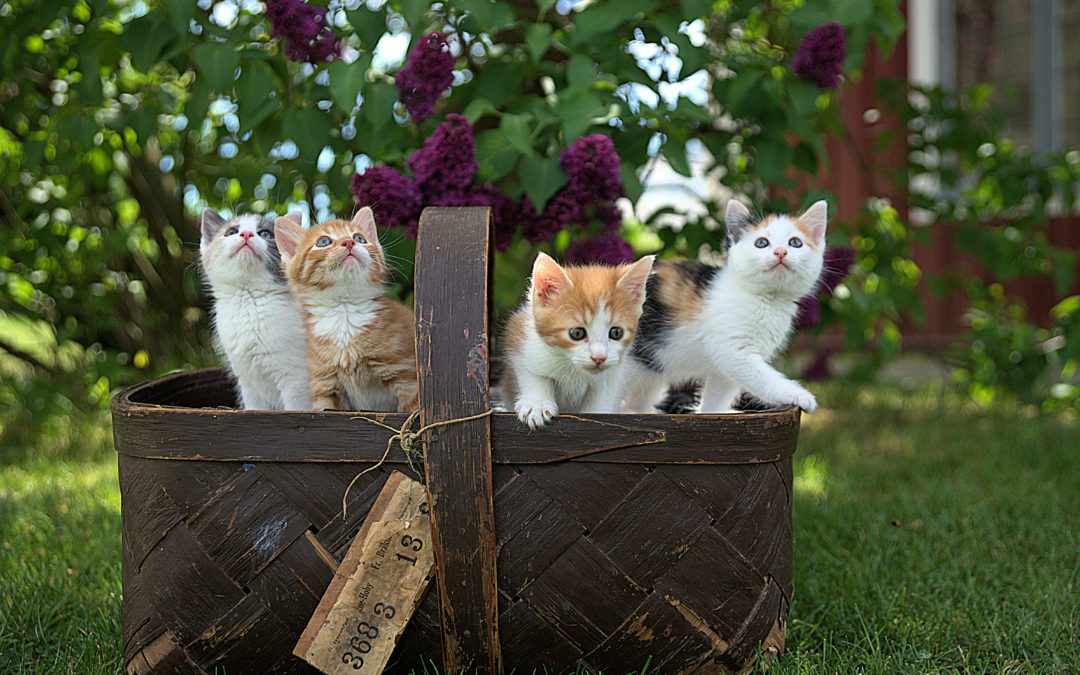Spring has sprung, and that means that “kitten season” is here! While kittens are some of the most adorable creatures on the planet, kitten season can be overwhelming for animal shelters and rescues who end up caring for the abundance of tiny baby kitties that are born homeless.
Generally speaking, kitten season runs from March through October. However, in warmer climates like right here in southern California, kitten season actually happens twice per year. That’s because weather plays a big part in regulating the heat cycle in felines.
The timeline goes something like this: an unaltered female cat goes into heat (usually in early spring to late fall), she becomes pregnant, and 60 days later, she gives birth to her litter. Typically, a mama cat will give birth to between four and eight kittens.
When you consider that female cats can have more than one litter each year, it’s easy to see why the cat population grows so quickly. Shelters and rescues fill-up with kittens at this time of year, so if you have been thinking about adding a kitten to your family, we encourage you to visit a local shelter or rescue first. Also, consider adopting kittens in pairs if your situation provides for it. Kittens love having playmates, and it honestly doesn’t add any more work to have two versus one.
Here are some quick kitten stats!
- Felines are considered kittens until they have reached one year in age.
- Kittens instinctively know to use a litter box.
- All kittens are born with blue eyes, and their permanent eye color appears around four weeks of age.
- A kitten can be spayed or neutered when they reach two pounds in body weight, typically at eight weeks of age.
- Unaltered female cats can become pregnant at just four months old, so it is crucial to spay (and neuter) your kittens!
Spaying and neutering cats is the best way to control the pet population, and to help prevent overwhelmed shelters and rescues during kitten season. In some places, local officials have established trap-neuter-return (TNR) programs for community cats to help slow down this cycle. It has dramatically reduced the number of cats that are euthanized at community shelters.
If you’re looking for ways to get involved locally during kitten season, here are some things you can do!
- Consider fostering a litter of kittens
- Donate old towels, blankets, toys, food, litter, and more to a local animal shelter or rescue
- Use social media to share posts about adoptable pets or fundraising efforts
- Volunteer your time at a rescue or animal shelter
- Ask your local shelter or rescue if they have an Amazon Wish List for supplies, and host a virtual “kitten shower” with your friends, coworkers and/or family members
While kittens are absolutely adorable, it’s very important to do your part in keeping kitten season under control for the rescues and animal shelters on the front lines. In an upcoming blog post, we will explore what you should do if you encounter newborn kittens with or without their mom.
If you’re interested in adopting, fostering or volunteering with Paw Prints In The Sand animal rescue, please reach out to us at info@pawprintsinthesand.org. We appreciate your ongoing support!
Author profile:
Kyle Colton is a freelance copywriter, flight attendant, and animal mom to Henri (a 13-year-old Landseer Newfoundland), Pearl (a 5-year-old PPITS alum kitty), and Ruby (a 2-year-old rescue kitty).


Recent Comments